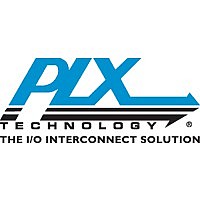NET2272 PLX Technology, Inc., NET2272 Datasheet

NET2272
Manufacturer Part Number
NET2272
Description
Manufacturer
PLX Technology, Inc.
Datasheet
1.NET2272.pdf
(2 pages)
Available stocks
Company
Part Number
Manufacturer
Quantity
Price
Company:
Part Number:
NET2272
Manufacturer:
NETCHIP
Quantity:
5 510
Part Number:
NET2272
Manufacturer:
NETCHIP
Quantity:
20 000
Part Number:
NET2272REV1A-BC F
Manufacturer:
PLX
Quantity:
20 000
Company:
Part Number:
NET2272REV1A-BC-F
Manufacturer:
ROHM
Quantity:
2 500
Company:
Part Number:
NET2272REV1A-LF
Manufacturer:
PLX
Quantity:
8 000
Part Number:
NET2272REV1A-LF
Manufacturer:
NETCHIP
Quantity:
20 000
Company:
Part Number:
NET2272REV1A-LF
Manufacturer:
PLX41
Quantity:
19 273
Features
.
Overview
Hi-Speed USB 2.0 Interface
o 8/16 bit local bus connects gluelessly
o Hi-Speed USB 2.0 Peripheral Port
o Bursting DMA support facilitates
o High Bandwidth Isochronous Support
o Low Power(186mW) requirements
o Lowest standby power in its class
o Variable I/O voltage (1.8V to 5V)
o Lead Free Packaging
o 10x10mm 64-Pin TQFP Package
o 6x6mm, 64-Ball BGA Package
o USB 2.0 Peripheral Interface
o Hi-Speed USB with Sustained
o Backwards compatible to Full Speed
o Utilize up to 30 Independent USB
o Support for Bulk, Isochronous, and
o
to most CPUs, DSPs, and DMA
controllers
data transfers at 480 Mbps
ideal for USB Bus-Powered
Operation
(8.1µW)
Bandwidth of up to 40MBytes/sec (at
480 Mbps bursts)
USB connections
Endpoints using Dynamic Virtual
Endpoint Technology
Interrupt Endpoints
Integrated PHY
Version 1.3 2005
TM
Optimized for Power and Performance
PLX Technology’s NET2272 Local Bus to Hi-Speed USB 2.0 Peripheral Controller
is designed for low power and high performance applications.
The NET2272’s low power requirements (186mW active, 8.1µW standby) make it
ideal for bus-powered or battery-powered applications. USB bus-powered devices
are allowed to draw a maximum 500mA (according to the USB specification) of
operating current from the PC through the USB cable. The NET2272’s low power
makes this requirement easy to support. Furthermore, the NET2272’s variable I/O
voltage (1.8V to 5V) makes it easy to connect to other low power components.
The NET2272 features the highest sustained data transfer speeds on USB – up to
40Mbytes/sec. An optional Split Bus mode allows for simultaneous DMA and CPU
access to the NET2272. In this mode, the external DMA controller is connected to
upper 8-bits of the data bus, while the local CPU is connect to the lower 8-bits of the
data bus. While DMA transactions are taking place, the local CPU can
simultaneously access any endpoint buffer not involving the DMA.
The NET2272’s Dynamic Virtual Endpoint Technology™ actualizes the maximum
number of endpoints (30) allowed by the USB specification. This feature provides
the flexibility for applications to route different data through different endpoints to
improve quality of service and ease of design.
Add Hi-Speed USB 2.0 to Your Device
The NET2272 can be used to easily add a USB 2.0 peripheral port to any local bus
based embedded system. The local bus interface of the NET2272 can often connect
Local Bus to USB 2.0 Hi-Speed Peripheral Controller
Figure 1: NET2272 Block Diagram
NET2272
gluelessly because
its interface looks
like an 8 or 16-bit
SRAM. Most
CPUs and DSPs
already have these
memory interfaces
integrated.
The NET2272’s
asynchronous bus
makes it frequency
independent.
Accessing the
NET2272’s
registers is as
simple as accessing
memory.
Related parts for NET2272
NET2272 Summary of contents
Page 1
... Add Hi-Speed USB 2.0 to Your Device The NET2272 can be used to easily add a USB 2.0 peripheral port to any local bus based embedded system. The local bus interface of the NET2272 can often connect Figure 1: NET2272 Block Diagram ...
Page 2
... Cell Phones and PDAs As cell phones and PDAs include more memory for storing rich media, faster USB transfer rates become more important. The NET2272 is designed to easily add Hi-Speed USB 2.0 functionality to today’s communication devices. With the USB Communications Device class driver, PCs can easily use cell phones, connected through USB, to setup a high speed wireless internet connection ...



